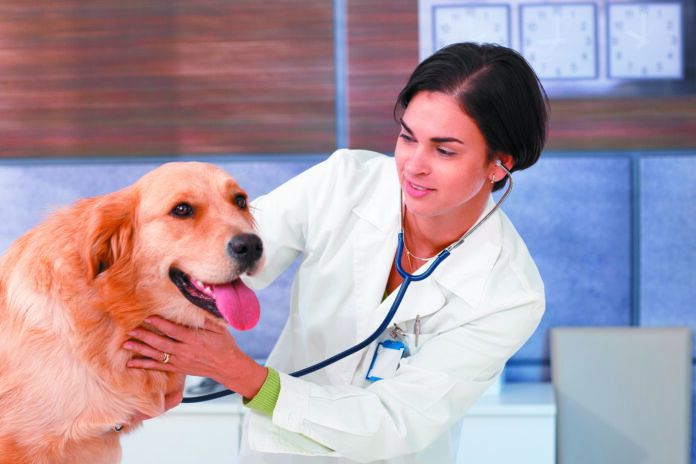Marty Becker, DVM, founder of the Fear Free initiative to help veterinarians ensure that dogs and other pets feel safe and calm during veterinary visits, says that every time we hug a family member, whether two- or four-legged, the “feel good” hormone oxytocin is released in the body. It provides a sensation associated with calmness, relaxation, joy, and affection.
Touch in general is vital to our wellbeing, Dr. Becker says, pointing out that touching the skin of another in the right way can reduce heart rate, blood pressure, and levels of cortisol — a stress hormone.
The same, he maintains, is true for dogs. After all, he comments, touch is the first sense to develop in a puppy. Her eyes and ears do not even develop for the first couple of weeks yet her skin, the largest of the body’s organs (yes, skin is an organ), is ripe for receiving sensation.
With that in mind, he suggests in the journal Veterinary Practice News that veterinarians and veterinary technicians handle dogs with slow, caressing movements. That doesn’t just result in a pet who feels calm and “not freaked out,” he says. It results in a better exam that yields more information about the state of a dog’s health. How?
Palpating (feeling) the body of a dog who is calm, trusting, and unafraid better allows a doctor to understand what a dog is feeling physically. If a dog is nervous, with her entire body tensed throughout an exam, it could be more difficult to understand where she might be feeling pain. Her body is too “wound up” all around to give useful signals. But if a dog is relaxed while being touched, the veterinarian will be better able to isolate any areas that might react negatively to touch as a result of pain or discomfort.
The right kind of body language
The primary goal of fear free veterinary touching is for the doctor to communicate to the dog that he means no harm. That means the vet starts with non-invasive touching of the body part that the pet offers or seems to prefer and rewards her good response with cooing or perhaps a small treat.
Once the pet is comfortable, the veterinarian should calmly and gently glide his hand across the dog’s body and through the various procedures necessary for the exam. The doctor should also pause and temper what he is doing based on how the pet is reacting. In other words, if the dog is becoming nervous or agitated as the touching ramps up, the vet should hold up, reassess, and then perhaps try again more gently, or go back to gentle stroking that the dog enjoys and see how it goes after that.
Another way of putting it: the physical exam should have a massage-like quality to it, with the patient participating in decisions about the pace at which the exam goes.
To learn more about Fear Free care, both at the doctor’s office and in your own home, and where you can find a veterinarian in your area who is a certified fear free practitioner, go to fearfreepets.com.





